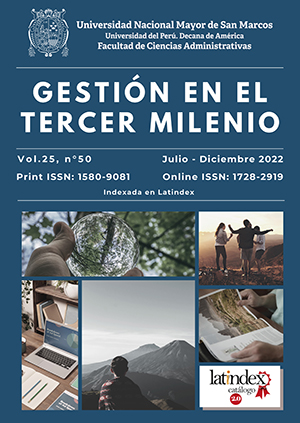Key Dimensions for economic growth of small coffee farmers in Tocache, Peru
DOI:
https://doi.org/10.15381/gtm.v25i50.24287Keywords:
Producers, associativity, productivity, marketing, economic growthAbstract
In Peru, a key export product is coffee, in particular its Arabica variant. The production areas are located in the high jungle, between 800 meters above sea level and 1,900 meters above sea level. About 60 million wages are generated each year, including those that come from the services of trade and transport of the product. Almost 150,000 families of small farmers have coffee as their livelihood. The research aims to analyze the collective, community and economic situation of small coffee farmers in the district of Tocache in San Martin and determine if the dimensions of associativity, productivity and marketing affect their economic growth. This research was based on a non-experimental, correlational, cross-sectional study and used instruments such as questionnaires and the compilation of data and references through secondary sources. The study population consisted of 200 small coffee farmers scattered throughout the district, who own less than 10 hectares of farmland. As a result of the investigation, it was determined that there is a relationship between associativity, productivity and marketing as dimensions of administrative management of small coffee farmers in the Tocache district that positively affect the economic growth of their community.
Downloads
Published
Issue
Section
License
Copyright (c) 2022 Roberto Carlos Trujillano Rojas

This work is licensed under a Creative Commons Attribution 4.0 International License.
THE AUTHORS RETAIN THEIR RIGHTS:
(a) The authors retain their trademark and patent rights, and also over any process or procedure described in the article.
(b) The authors retain the right to share, copy, distribute, execute and publicly communicate the article published in Gestión en el Tercer Milenio journal (for example, place it in an institutional repository or publish it in a book), with acknowledgment of its initial publication in the Gestión en el Tercer Milenio.
(c) Authors retain the right to make a subsequent publication of their work, to use the article or any part of it (for example: a compilation of their work, lecture notes, thesis, or for a book), provided that they indicate the source. of publication (authors of the work, magazine, volume, number and date).













